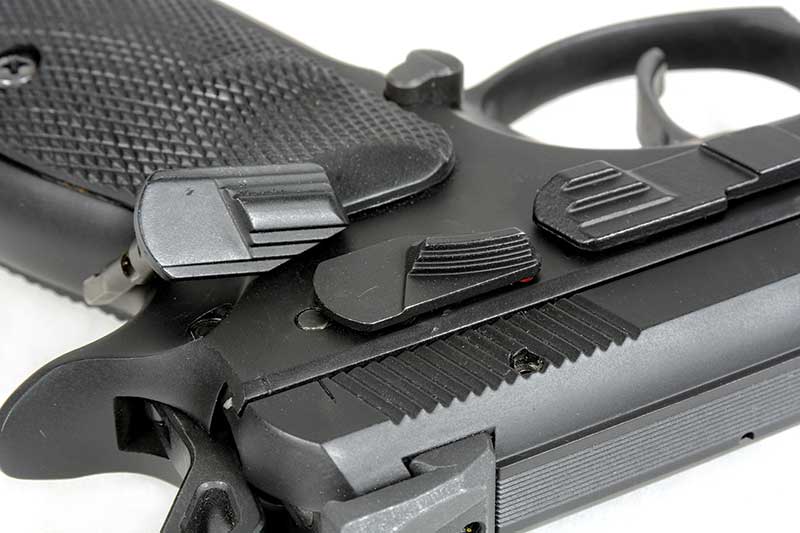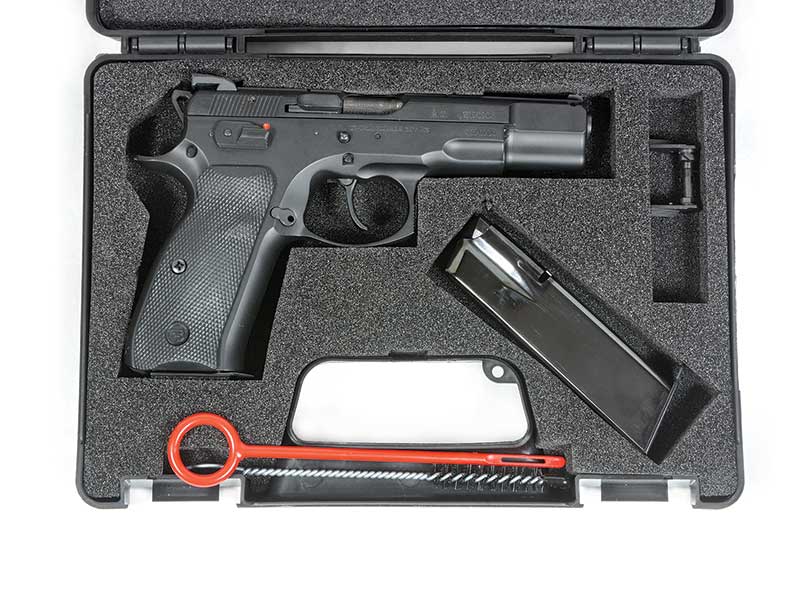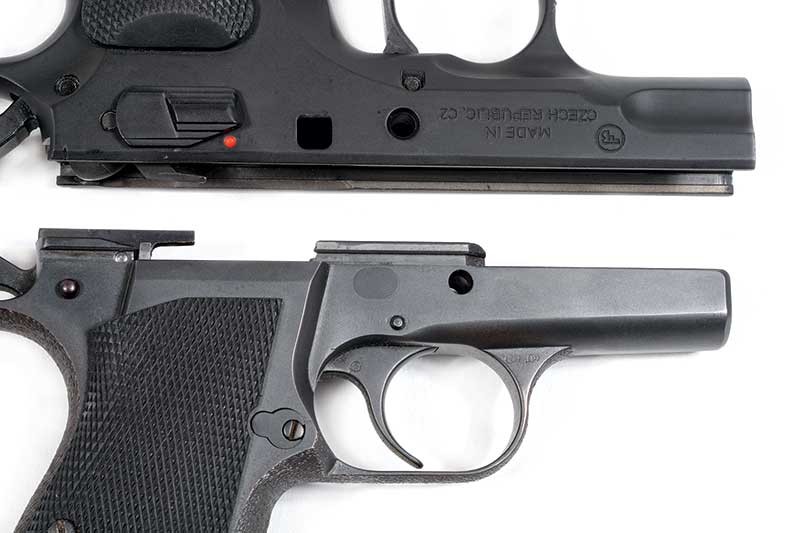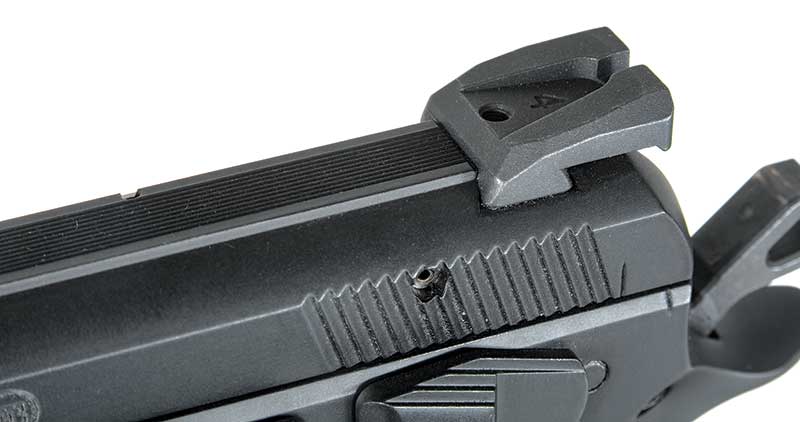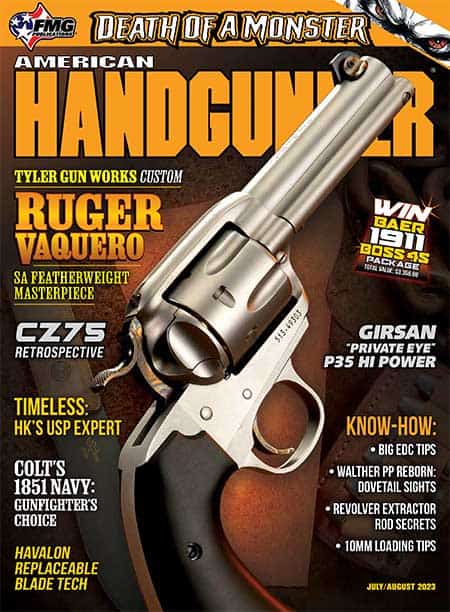Better Than I Knew
A CZ75 Retrospective
With the recently revived Hi-Power getting its deserved resurgence, it’s time to talk about another classic 9mm service pistol due for a little more attention. Introduced, unsurprisingly, in 1975, the double/single-action CZ75 spent its earlier life cloistered in the Communist bloc until those winds of change the Scorpions sang about blew down the Iron Curtain and spread it more readily to the free world. Česka zbrojovka was a long-established producer of Czechoslovakian military firearms, and the ’75 represented a sharp departure from its previous service pistols, which were functional, and at times innovative, but never mistaken for elegant. Take, for example, the fearsomely bulbous VZ 38, an image that will haunt the dreams of the aesthete forever.
Similarities & Differences
A high-capacity double-action 9mm, as was popular at the time, the CZ75 combined the service pistol trends begun in WWII with the double-action Walther P38 and the 13-round Hi-Power. And you could be forgiven for thinking of the CZ75 as a double-action Hi-Power: The magazines are similar enough that a ’75 will feed in a Hi-Power if you hold it in place, and both have the same distinctive narrowing cuts on the slide, though they extended much farther back on the earliest CZs. Both barrels share the familiar Browning-type upper lugs and cam lower lug JMB patented around 1905.
Double-Action? Or …
The departures begin at the trigger mechanism, which is neither single-action nor the decocker-safety double-action pioneered on the P38 and adopted by CZ75 contemporaries like the S&W 59 and Beretta 92. Even before the ’75, CZ was no stranger to double-action: Alois Tomiska, who in 1910 patented the Little Tom .32, believed to be the first DA auto, designed pistols for the company that later became CZ starting in 1919. CZ had prototype double-action pistols no later than 1931, followed by the .25 caliber VZ 36/45 and later VZ 50/70 blowback autos that the Walther PP/PPK clearly inspired.
Instead of the more broadly copied Walther system where the safety drops the hammer when applied, the CZ75 safety locks the hammer in the cocked position (“condition one”) or, with the hammer in half-cock, locks the entire action down where the slide cannot be cycled. Starting with a DA first shot requires gingerly lowering the hammer by hand. It offers you a choice of both worlds: an off-safe double-action first shot for those who are nervous about carrying a pistol with the hammer laid back or cocked-and-locked for those of us who aren’t.
Inside Ride
Like the SIG P210, and unlike virtually everything else, the CZ75 slide rides inside the frame rails instead of having the slide overlap the frame rails on the outside. While I’ve heard it claimed this makes it inherently more accurate, that’s not quite true in the way it might seem.
Mechanically, I know of no reason the simple placement of the rails affects accuracy. What does, though, is the fact that riding inside the frame means there is no obstruction at the front of the slide that acts as a stop against the frame rails, requiring them to be shorter than those on the slide. Instead, the rails on the CZ’s frame run the entire length of the frame, allowing for a far longer bearing surface than on most pistols. It also creates a wider frame, which is generally to be expected on a double-stack pistol, though it does make the top part of the CZ receiver a bit bulkier than it would be otherwise. Nonetheless, the flare at the bottom of the frontstrap and the slight palm swell of the grips gives it an excellent feel in the hand.
Safety Action
Like all guns, the CZ75 evolved to have a firing pin safety (CZ75B) and ambi controls (CZ85), and CZ has wisely used it as the core design language for most of their handgun line, including the polymer-framed P-09, the .45 caliber CZ 97, SP-01, Shadow, RAMI and other pistols. There have also been a blue million copies, including the Dornaus & Dixon Bren Ten that introduced the 10mm cartridge and was promoted by no less than Col. Jeff Cooper himself, whose home I’m sitting about a hundred yards from as I write this.
Of the still classically styled ’75 derivatives, the CZ75B Omega convertible was the most advanced. With a slightly simplified mechanism, it’s readily user-convertible between a decocker double-action (like the current CZ75 BD) or the traditional DA/SA with a safety that allows cocked and locked carry (CZ75B). Visually, it has a slightly different contour for the trigger and the frame directly behind it, and a squared hammer rides above a subtle but shapely integral beavertail. Capacity is 16-in-the-clip-and-one-in-the-hole, for a total of 17 rounds.
Mine, purchased shortly before CZ announced the end of production, came with the decocker safety installed. To change it (which I did promptly), first field strip the gun by clearing it and removing the mag. Like any other ’75, you pull the slide back until the witness mark on the left rear of the frame lines up with the one on the slide so the slidestop can be tapped out. Unlike a Hi-Power or 1911, it will not push out with your fingers: It has to be driven out, and woe be unto you if you try without the witness marks lined up correctly. Run the slide assembly off the frame, and you’ll see the cross shaft of the ambidextrous safety/decocker. The right-side lever has a tab that, once inserted through its hole in the frame, is locked into place by the trigger bar. It comes out last. The right-side lever, another feature borrowed from the Hi-Power, is held in place by the ejector. To separate them, push down on the ejector while pushing inwards (right to left) on the cross shaft, where it protrudes through the right-side lever. A small punch will help. Once the left side lever is out, rotate the right side one and push down on the trigger bar to remove it.
The decocker has a spring that rides on the cross shaft and you’ll want to pay attention to its orientation before you remove it to ensure you reinstall it correctly. Better yet, take a picture with your phone. One other word to the wise: The safety lever detent is a small, flat spring-loaded piece held in tension against the back of the safety plate and fits into a shallow recess on the side of the receiver. It pops out easily, and you’ll want to ensure it’s oriented correctly in the safe/off-safe position before you try to shove it into place. Obviously, I learned this the hard way, but at least the tiny black tab was easy to find against the light-colored carpet in my office.
Shooting Performance
The trigger is excellent with a smooth double-action pull of 10 lbs., 8.5 oz. and a single-action of 3 lbs., 12.9 oz. that releases with a short, smooth roll rather than the proverbial glass rod. While the safety lever is flatter than on other single-action pistols, I had no trouble hitting in a hurry, and the lower profile does make it less likely to get deactivated (or activated in recoil, as can happen with 1911s) accidentally. I put over 400 rounds through the CZ75B Omega, a mix of ball and JHP from Federal, CCI and Black Hills, and my handloads using 124-grain Blue Bullets. It had two hiccups in the first few magazines, then steadily fed everything thereafter — except one malfunction later on when I stripped it and removed all the oil for photos and forgot to re-oil it, which is on me. A little oil on the rails and it returned to its sewing-machine smoothness.
I shot it at close range and long range. I bounced shotshell hulls down the range, out beyond 25 yards. I shot around 2″ on paper at 25, and sometimes better. I shot it in the summer, in the fall, in the rain, and in blowing snow, and I shot it better than I remember having shot any other 9mm pistol.
I’ve long believed that CZ is the most underestimated gun company in the world. I just didn’t realize I was still underestimating them.
For info: CZ-USA.com, GalcoGunleather.com, FederalPremium.com, Black-Hills.com, TheBlueBullets.com




